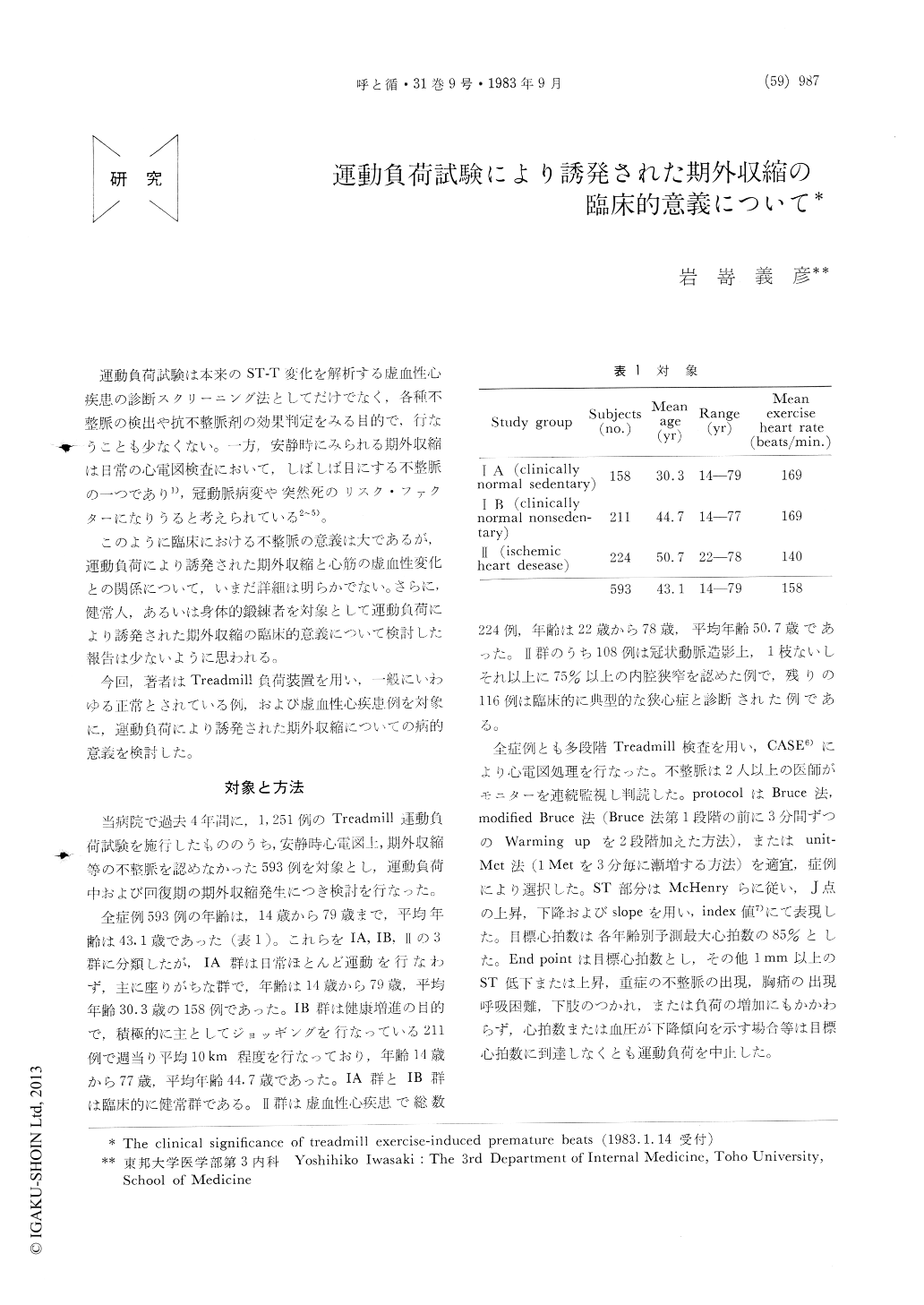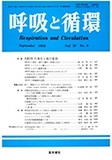Japanese
English
- 有料閲覧
- Abstract 文献概要
- 1ページ目 Look Inside
運動負荷試験は本来のST-T変化を解析する虚血性心疾患の診断スクリーニング法としてだけでなく,各種不整脈の検出や抗不整脈剤の効果判定をみる目的で,行なうことも少なくない。一方,安静時にみられる期外収縮は日常の心電図検査において,しばしば目にする不整脈の一つであり1),冠動脈病変や突然死のリスク・ファクターになりうると考えられている2〜5)。
このように臨床における不整脈の意義は大であるが,運動負荷により誘発された期外収縮と心筋の虚血性変化との関係について,いまだ詳細は明らかでない。さらに,健常人,あるいは身体的鍛練者を対象として運動負荷により誘発された期外収縮の臨床的意義について検討した報告は少ないように思われる。
In 593 subjects, the incidence of treadmill exercise-induced premature beats were studied. All subjects showed no finding of premature beats at rest. They were classified into three groups on the basis of their clinical status. 158 subjects were normal sedentary group (Group IA). 211 subjects were normal athletes group (Group IB). 224 subjects were patients with ischemic heart disease (Group II).
The incidence of exercise-induced premature beats was 24 percent in Group IA, 35.1 percent in Group IB and 35.7 percent in Group II. No significant difference seemed to be recognized between the incidence of exercise-induced premature beats of the above three groups. But in Group II, the incidence of multifocal ventricular premature beats and short run were more frequent than in Group IA and IB. The incidence of exercise-induced premature beats increasedprogressively with age. In Group II, 108 subjects were examined by coronary arteriography. And one or more of the major arteries demonstrated a 75 percent or greater obstruction. The incidence of exercise-induced ventricular premature beats was not related to the nomber of the stenotic coronary arteries. Group II had a greater incidence of the onset of exercise-induced ventricular premature beats under the ischemic ST-T change and heart rates less than 120 beats/min. Group IA and IB had a greater incidence of that under the non ischemic ST-T change and heart rates more than 150 beats/min. The onset of exercise-induced ventricular premature beats under the ischemic ST-T change and lower heart rates might be clinically significant.

Copyright © 1983, Igaku-Shoin Ltd. All rights reserved.


